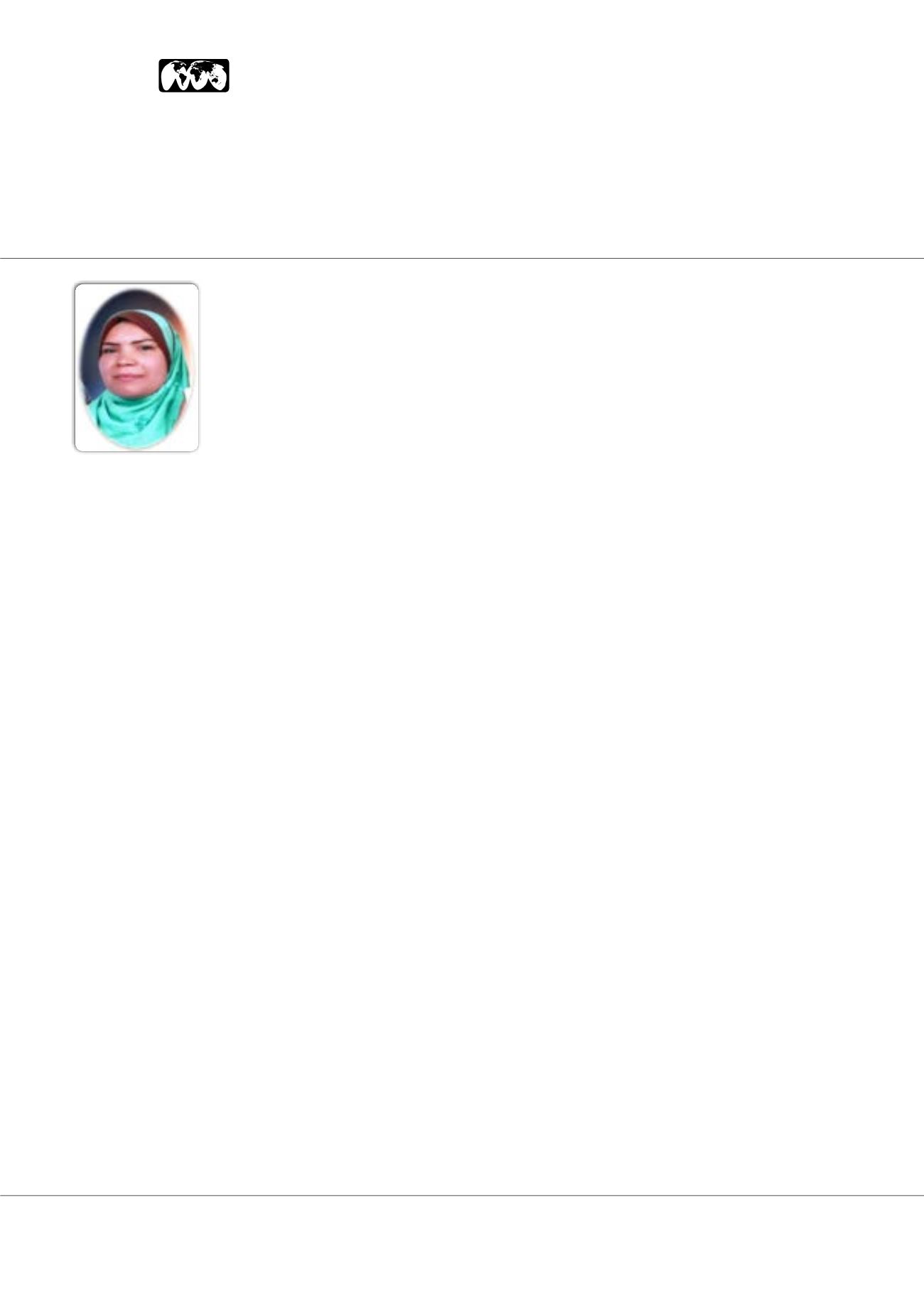

Page 35
allied
academies
Asian Journal of Biomedical and Pharmaceutical Sciences | Volume 8
March 26-27, 2018 | Orlando, USA
World Summit on
Healthcare & Hospital Management
&
International Conference & Exhibition on
Biologics and Biosimilars
Amal I Khalil
King Saud bin Abdul-Aziz University for Health Sciences, Saudi Arabia
Nurse’s knowledge, attitudes and practices versus patient’s perspectives on the use
of seclusion and physical restraint: Evidence based on psychiatric clinical practices
T
he overall goal of this speech was to support the evidence
based on clinical psychiatric nursing, regarding the
elimination of seclusion and restraint practices in inpatients’
psychiatric wards. This was done by conducting two studies:
The first was conducted with an objective of investigating the
nurses’ knowledge, attitudes and practices towards the use of
seclusion and physical restraints; the second study however,
was aimed to investigate the psychiatric inpatients’ experiences
and suggestions regarding seclusion and restraint practices. The
data was therefore collected in 2 phases from two different
settings, between October 2014 and June 2015. Firstly, 37
nurses (52.8%) of whom were male had moderate knowledge
and attitude, yet a strong intent to use physical restraints.
There was therefore, no significant correlation between nurses’
practice, knowledge and attitude scores. It was noted that
33.3% of the respondents preferred using both restraints and
seclusion. The male gender was correlated with a higher use
of physical restraints r=−341, while the use of seclusion had a
positive significant correlation with nurses’ level of education
r=465, and a negative association with the other demographics.
The second study explored the patient’s perceptions regarding
their obligation to be in either physical restraints or seclusion.
The results revealed that themajority (60.9%) of theparticipants
perceived that S/R application is neither necessary nor benefical
in treating their dificulties. Hence, the frequency of restraint
among the study participants ranged between zero and eight
times, while the seclusion frequency ranged between zeros
to twenty times. Consequently, and based on the results from
both studies and other findings done in the same field, there
was an evidence that nurses’ inadequate level of knowledge
on the physical and psychological effects of restraints and
seclusion impact their performance and attitude in caring
with psychiatric patients. Therefore, an in-service training
program on procedure, indication, and negative consequences
of restraints and seclusion is highly suggested to limit the
frequency of its use amongst psychiatric patients. Moreover,
the recommendations of this study are supported by literature.
According toBalas andBoren (2000), leaders andclinicians in the
research setting need to understand the relationship between
an organization’s culture of safety and patient outcomes, as well
as how nurses’ qualifications and certification can influence
executives to lead working environment improvements. In
addition, and even more important, future researches need to
address how research findings and evidence can be translated
to become the new standard of nursing practices. Likewise,
the recommendation is parallel with the necessary request
of psychiatric patients, which is to eliminate seclusion and
restraint by supporting the use of less intrusive, preventative,
and evidence-based interventions in behavioral emergencies
that aid in minimizing aggression while promoting patients’
safety.
Speaker Biography
Amal I Khalil is an Assistant Professor of Psychiatry and Mental Health Nursing at the
Menoufyia University in Shebin-alkom, Egypt. Currently, she is working at King Saud bin
Abdul-Aziz University for Health Sciences, College of Nursing, Jeddah, where she was
awarded many times for her teaching activities, community and social contributions.
She was nominated as a Reviewer to the
Journal of Horizon Research Publishing
,
USA,
International Journal of Nursing and Clinical Practices
and
International Journal
of Research in Nursing
. She has many publications and presented many research
papers both nationally and internationally. In addition to teaching and research, she
had worked as a Psychotherapist at a private practice and has membership in APNA
(American Psychiatric Nurse Association), Family and Child Safety program related
to National Guard Health Affairs, Saudi Arabia, and KAFA institution for smoking and
addiction management.
e:
khalilam@ngha.med.sa















